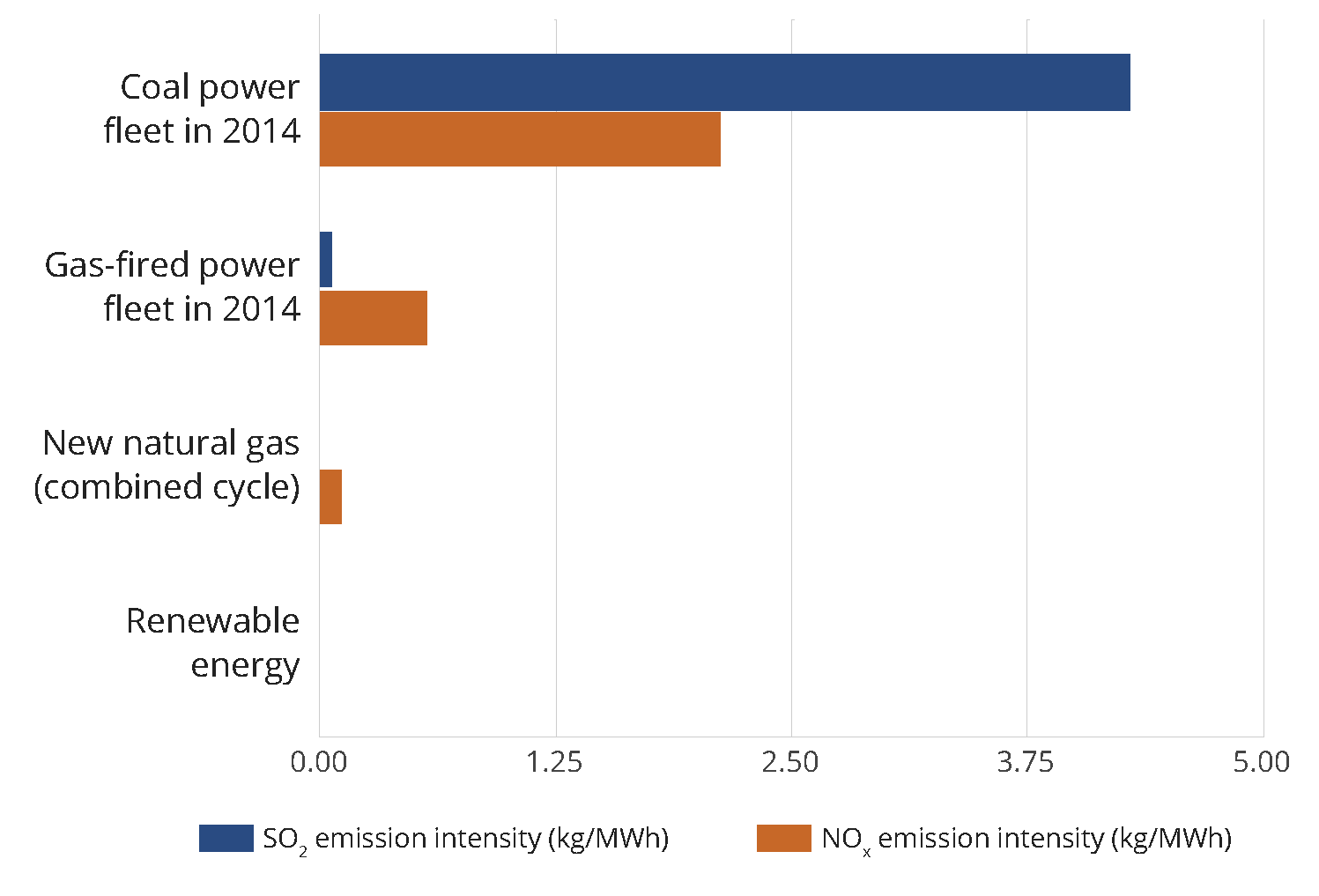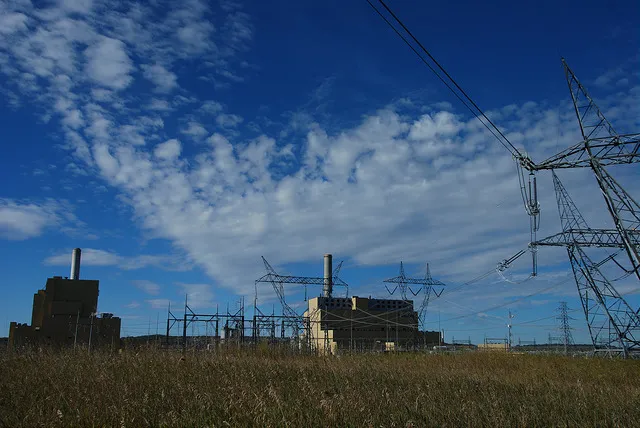In November 2016, the Government of Canada announced its intention to phase out coal as a source of power. Since then, many voices have misrepresented or questioned the impact that coal emissions have on Canadians’ health and our environment. In order to clear the air, we’ve answered four of the biggest questions being asked about the link between an accelerated phase-out of coal-fired power and human health.
1. How harmful are emissions from coal-fired power on Canadians’ health?
Coal-fired power plants are a contributor to a range of harmful air pollutants. When compared to other electricity generating options, coal power produces unmatched volumes of sulphur dioxides (SO2), nitrogen oxides (NOx), fine particulate matters (PM2.5) and mercury — to name only the most harmful pollutants associated with coal. Each of these pollutants have been consistently linked to adverse outcomes on human health, and the effects may be worsened when combined with other pollutants. For some of these pollutants, there is no safe threshold at which humans can be exposed — meaning even low exposure can have implications for human health. These findings are repeatedly confirmed by a range of authorities including World Health Organization, Health Canada, and the European Union.

For each unit of electrity fed into the grid, Canada’s coal power fleet emitted nearly 60 times more SO2 and 4 times more NOx than existing gas-fired plants in 2014. Due to more stringent standards and improved technology, new natural gas plants emit 18 times less NOx than existing coal-fired plants and virtually no SO2. Renewable energy does not emit any NOx or SO2.
The health impacts of these emissions include increases in respiratory ailments, diseases and premature death (attributed to exposure to SO2 and NOx), and the development of asthma during childhood (attributed to exposure to NO2 and PM2.5). Impacts also lead to increased adverse reproductive outcomes such as congenital heart defects and preterm delivery (attributed to exposure to SO2). Health impacts also include chronic cardiovascular and respiratory diseases, including lung cancer, heart failure and cardiac arrest (attributed to exposure to PM2.5 produced from SO2 and NOx), and a reduction in cognitive abilities and motor skills (attributed to exposure to mercury). These impacts have significant implications for Canada’s health care system, as it leads to increased emergency room visits and hospitalizations, and a higher need for medications to treat these diseases.
2. How do scientists and public health professionals estimate the impact of coal-fired power on Canadians’ health?
There are a few studies looking at the social and health impact of coal power in the Canadian context, with the most detailed analysis conducted by Environment Canada in 2012. This analysis was done to examine the impact of the 2012 federal greenhouse gas regulations for coal units. The Regulatory Impact Analysis Statement (RIAS) provides a cost-benefit analysis using state-of-the-art models from Environment Canada and Health Canada to estimate how coal power affects local outdoor air quality by changing the concentration of air pollutants, and estimating the related impact to the health of Canadians.
Often, foes of the coal phase-out neglect to account for the fact that some of these air pollutants are chemically transformed into other pollutants after being released. Further, some misrepresent the Canadian air quality system and requirements of it or even challenge the fact that air pollutants emissions have an impact on human health at the first place.
Building on the results from the 2012 Environment Canada analysis, the Pembina Institute concluded in our 2016 report “Out with the coal, in the new”, that accelerating the retirement of Canada’s 35 coal-fired units by 2030 could save as much as 1,008 Canadian lives, avoid 128,800 asthma episodes, and prevent an estimated nearly 5 billion dollars in health-related costs between now and 2035. The numbers don’t lie: it’s a no brainer for Canada to eliminate our reliance on coal and put the health of Canadians first.
3. Why isn’t Canada just equipping coal plants with technology to reduce pollution, instead of phasing it out?
There were regulations developed in the 2000s requiring installing technologies to tangibly reduce emissions of SO2, NOx, PM2.5, and mercury for power generation facilities. While being applicable to all new power plants, these controls are only required for existing plants if they want to keep operating past the end of their life. This means that the majority of coal plants currently operating in Canada do not have these technologies installed yet; and for Alberta it means that 82% of coal-fired electricity in 2015 came from units not equipped with the latest pollution controls. Equipping all Canadian coal units with the latest pollution controls to reduce air pollutants (other than greenhouse gas emissions) would cost an estimated 12 billion dollars — enough to replace Alberta and Saskatchewan’s 24 coal units with clean, non-emitting wind power generation.
4. Aren’t other countries still using coal?
Recent policy decisions at the federal and provincial level align Canada with the growing trend of jurisdictions around the world that are committed to moving away from coal. Fellow trendsetters include New York state by 2020; France by 2023; the U.K., the Netherlands, and Denmark by 2025; and the state of Oregon by 2030. In many U.S. states, companies are shutting down their coal plants for economic reasons. In the cases of China and Germany, two countries often cited for their reliance on coal, recent data suggests tangible reductions in coal generation for the past few years. China recently announced it is halting construction on coal-fired plants in 15 regions across the country.
When the full costs of coal (i.e., social, health and climate costs) are added to the public balance sheet, phasing out coal-fired power is in the public interest. To ensure these policies continue to have a net-benefit for people, governments should direct efforts towards supporting communities and workers in transitioning industries. Many countries now agree: in 2017, coal’s place is in our history books — not in our energy systems.








